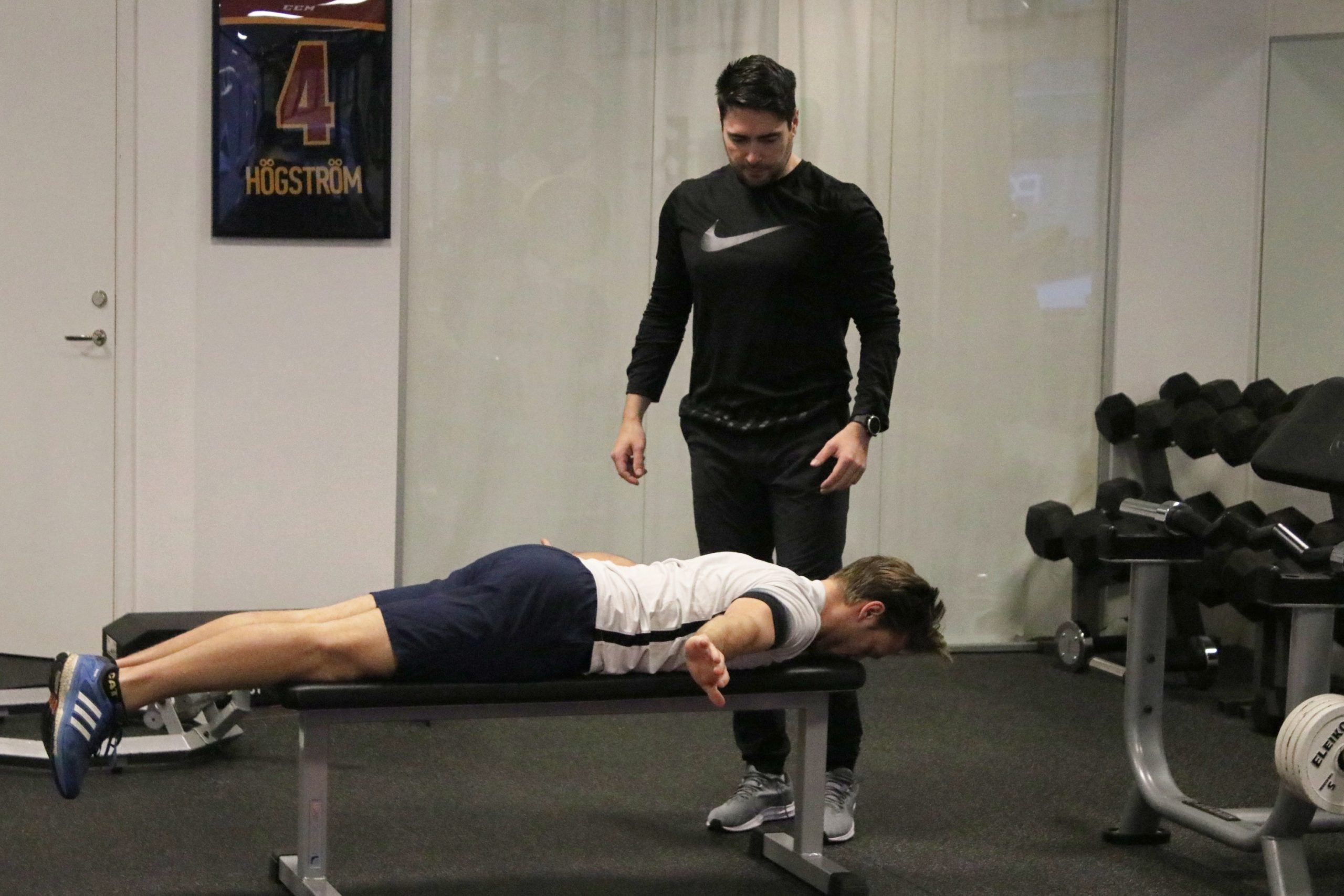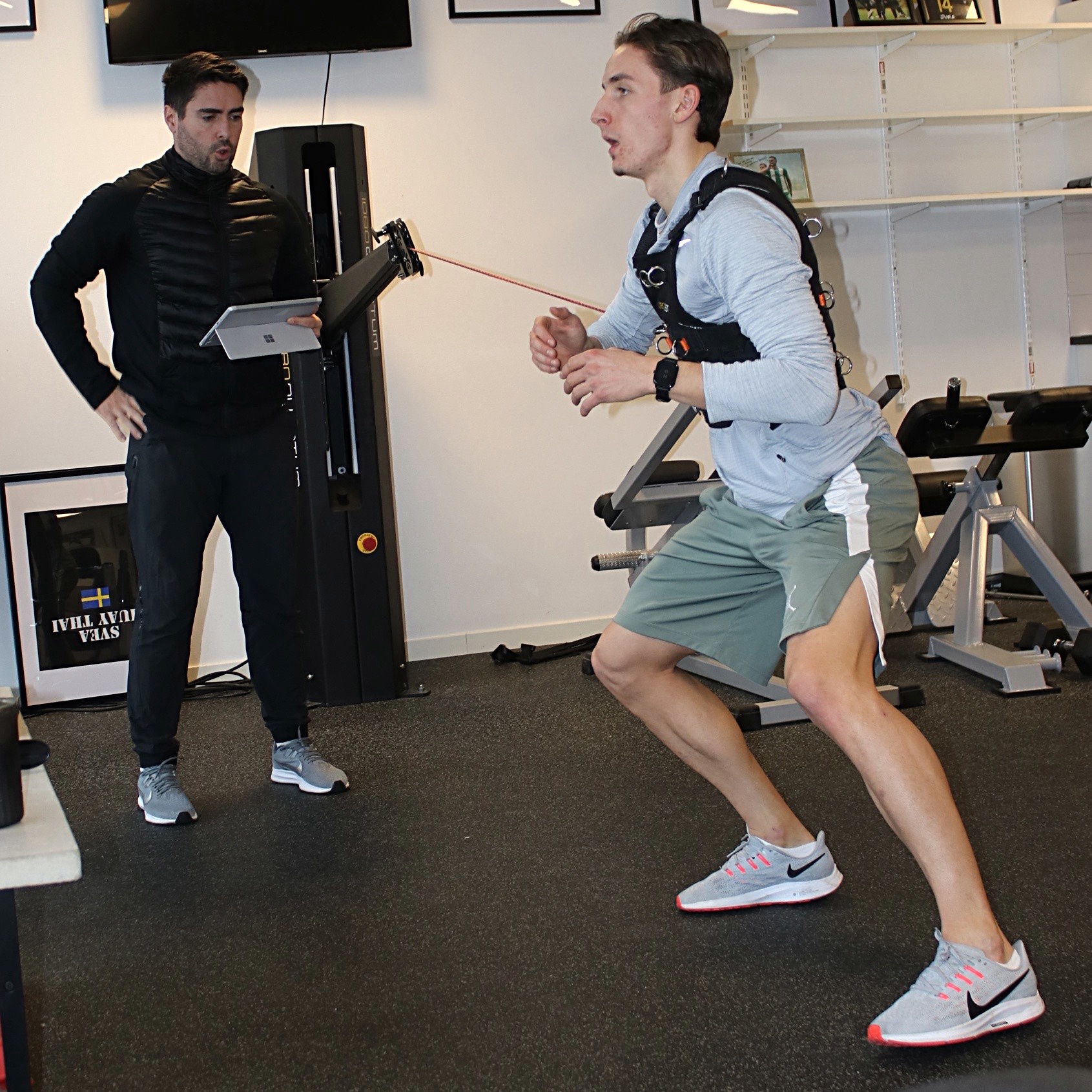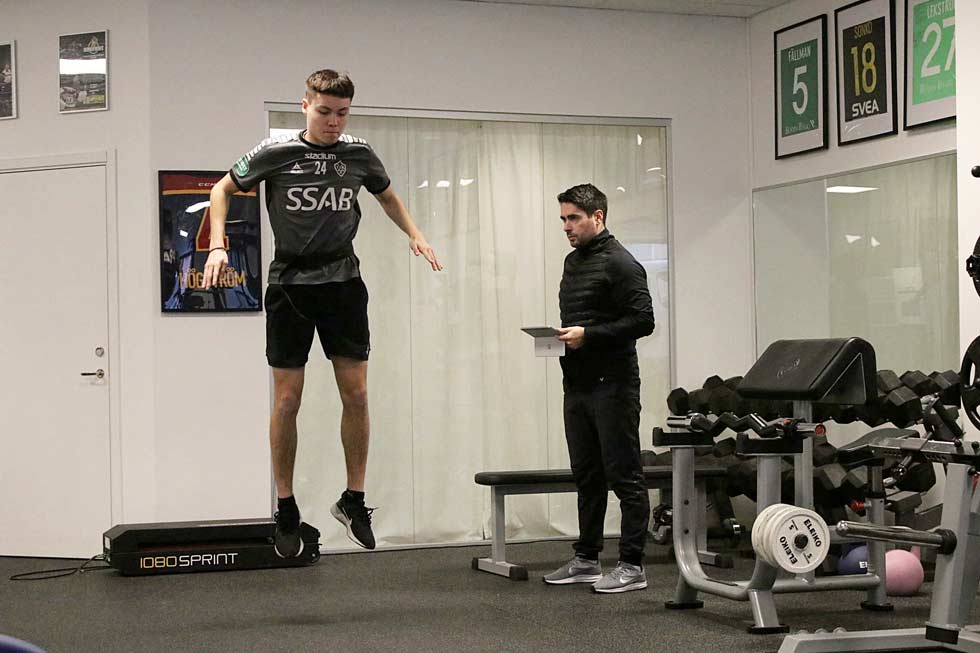The act of “managing” athletes tends to bring two completely separate images to mind: either an agent negotiating contracts and financial packages or a coach overseeing the planning and loading of a training program. At Wesport, a new boutique management organization based in Stockholm, those two distinct rails have been merged within a company targeting long-term health for both their athlete’s business interests and their physical wellbeing.
“Wesport is the future, they think in a very different way and they want to be part of the journey for athletes and contribute to make the athlete grow,” says the agency’s performance coach, Sebastian Pisano. Pisano understands that growth trajectory—thirteen years ago, he began his coaching career with only a couple athletes to train while confined in a cramped space. “I basically started in a basement with used equipment. It was about 50 square meters, I was alone, it had a bad smell, that was where I trained my first athletes.”
Now, with over a decade of experience developing athletes in disciplines ranging from martial arts to tennis to team sports, Pisano’s holistic approach targets physical improvements, mental skills, nutrition, and recovery while seeking to ensure Wesport’s clients are successful over time.
[av_button_big label=’More high performance training:’ description_pos=’below’ link=’manually, https://1080motion.com/force-in-the-rink-4-areas-to-apply-the-specificity-principle-in-hockey-training/’ link_target=” icon_select=’no’ icon=’ue800′ font=’entypo-fontello’ custom_font=’#ffffff’ color=’theme-color’ custom_bg=’#444444′ color_hover=’theme-color-subtle’ custom_bg_hover=’#444444′ av_uid=’av-154cfr9′]Force In The Rink—4 Areas To Apply The Specificity Principle In Hockey Training[/av_button_big]
“Like anywhere, we have academies in Stockholm for all sports and they have strength coaches, but for an academy, it doesn’t matter who becomes a pro, as long as someone becomes a pro,” Pisano says. “If they have 24 players, as long as one or two move up to the first team or another pro team, that’s a good thing. For a management company, however, it’s very important that it’s working for the specific athletes. So I have the privilege and pressure to ensure that they can perform their best in-season and through the off-season.”
How to Coach Athletes who Already Have Coaches
For many of Wesport’s clients, Pisano’s job is quite straightforward. With the tennis players managed by the agency, for example, Pisano has a significant influence on their programming and a greater ability to make dynamic changes in their training intensity, periodization, and other core variables. For his soccer players, hockey players, and other team sport athletes, however, Pisano hopes to impact everything from rehabilitation to prehabilitation to performance, but recognizes that in-season and during other phases he will have to defer and adapt his efforts to the work the athletes are doing with their team’s sport coaches and performance staff.

“Every team has their own strength and conditioning or physical preparation coach, right?” Pisano says. “So I need to work around them and with them. In some cases, I maybe help the athletes to prepare better for matches, it could be all forms of nutrition, activation, stretching, and more.”
Given that he has less in-person time with many of the athletes than their team coaches, Pisano needs to maximize that limited time and be sure that his input has a definable impact. Having the ability to incorporate 1080 Sprint and 1080 Quantum into these sessions has helped him accelerate the all-important process of building trust and buy-in.
“As my volume of athletes has increased, the 1080 systems have helped me find ways to gain their trust,” Pisano says. “If you have only two athletes, it’s very easy to gain their trust. The 1080 has helped me gain trust from the athletes faster. Lets say we’re doing technical work in sprinting, and I change their arm mechanics or the arm swing…then, I can show them their acceleration and how they’re moving faster. So that has helped me gain their confidence, which is a big impact.”
That ability to validate his methods extends from showing clear speed improvements to demonstrating how intent and focus in a proper warm-up can improve performance for rotational athletes.
“I had a tennis player a few weeks ago, he’s not that good in preparation and can be a bit sloppy in that,” Pisano says. “So we went through all of his preparation before a match, including activation and stretching, we did everything, and we actually saw 240 more watts of power in the rotation just by doing that activation and stretching. So I’m using the data to also show the athletes look what happens when we do this and this and this.”
All Force Is Not Created Equal
“When you work with such different athletes, such as say a hockey player and a soccer player, they’re from two different worlds,” Pisano says. “The hockey athlete here in Sweden is usually very good at producing force. They’re very strong, they’ve been training hard for a long time, and it’s a different energy system—basically, they move in a different way. And producing a lot of force is good most of the time, but if you don’t have good movement efficiency, it won’t help. So I’ve actually found that many of the hockey athletes I train have a tendency to produce a lot of force, but they’re not moving that fast.”
One of the specific areas Pisano has been training his athletes is in bridging any gaps between lateral force production and lateral speed, seeking to ensure that the ability to create force in those vectors also translates into multidirectional speed.

“We’re in a strength-based world at the moment, where strength is highly-valued—for good or bad—and force is not always the key in my practice,” Pisano explains. “I’ve actually been doing technical work to see how speed changes without using more force. So, we change angles. Can we be faster without using more force?”
Blazing a Trail
“I don’t have social media so I don’t see how everyone else is using things, I want to find my own groove and my own way,” Pisano says. “I haven’t been a big fan of new things or trends. I looked into force-velocity curves before and I looked at bar speed. But the things you can do with 1080 are not possible to do with anything else. That’s what makes it so unique.”
[av_button_big label=’Next post:’ description_pos=’below’ link=’manually,https://1080motion.com/next-generation-german-sprint-training-david-corell/’ link_target=” icon_select=’no’ icon=’ue800′ font=’entypo-fontello’ custom_font=’#ffffff’ color=’theme-color’ custom_bg=’#444444′ color_hover=’theme-color-subtle’ custom_bg_hover=’#444444′ av_uid=’av-pu1hkj’]The Next Generation Of German Sprint Training[/av_button_big]
For Pisano, the question isn’t how to keep up with everything that others may be doing in the field, but instead to keep finding ways to make a true impact with each individual athlete in his charge. To that end, the key for him is transfer, making sure that what he does in the gym has some direct connection to performance. That same focus drives the entire organization.
“At Wesport, we don’t just want to be there when it’s time for the athletes to sign a contract,” Pisano continues. “I have a lot of contact with the athletes in their everyday life and I take a place where we’re just thinking about what we can do to help the athlete improve. Power, speed, reducing injuries, all these things make the athletes very interested in my work.”






























































